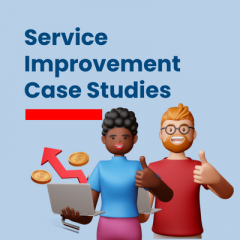

Mark Temple, IT Service Project Manager
Hi All,
Apologies for the delay in getting the second instalment out, but as you can imagine, it’s been a busy old time at the University – Enterprise Service Management systems don’t just design and configure themselves, especially when you’re dealing with multiple lines of business.
Before I go any further I’ll quickly recap on the journey so far…
We completed a fairly lengthy tender process earlier in the year, which saw 19 submissions from an array of vendors, a number of which were proposing the same solution. After much shortlisting and deliberation, Ivanti’s Service Manager Software as a Service platform (ISM) scored highest against our list of criteria and licensing requirements, and they were awarded preferred bidder status.
Having moved out of the procurement phase, we then met up with Ivanti’s project team and set about the daunting task of creating the blueprint for our staging environment. The first phase saw colleagues from across multiple functional areas – IT, Registry, Student Lifecycle and our Transformation Office nail down Incident and Service Request handling, which brought up the ugly spectre of what to do with email…
I’m not a fan of prescribing to our end user community how they should contact us, but in order to realise efficiencies, we paid close attention to the appropriateness of the various channels for the variety of requests and reports that come our way. We won’t be turning off email as an inward channel any time soon, but providing a slick self-service offering was felt to be the best approach to weaning students and staff off of sending in unstructured requests for non-urgent services, so we need to up our game in identifying and presenting these service offerings the best way we can.
Fortunately, the searchable catalogue of services helps enormously, and when you look to ITIL’s Guiding Principles for inspiration, the first three (focus on value, design for experience and start where you are) give you a clear direction of travel.
Of course, it’s not just about presenting the same old services in a new skin, we know that many of the supporting processes haven’t been looked at for ages, and many of them rely on “cut out and keep” Word docs which need to be printed out, signed, then scanned back in for authorisation – a perfect opportunity to streamline and speed up these processes.
As I’ve been saying to colleagues for long enough, this isn’t just a change of platform, but an opportunity to change the way we deliver and support the services which our students and staff rely upon to achieve their objectives, so we’ve been working closely with service providers and other work streams to reinforce the need to adopt “Shift-Left” thinking, utilising ISM’s Knowledgebase, and where possible, empowering front line services to “push the buttons” that back-end teams and even other services were traditionally responsible for – a concept that IT has been making good ground on, but one that works just as well in other areas.
So, on to the next areas for attention – HR Enquiry and Case Management, Data Protection and Freedom of Information Requests, Accommodation and Living Support, Campus Security, and Complaint Handling. As you can imagine, these areas need to gather a wide range of information, which needs to be watertight from a data security perspective, one of the reasons Ivanti’s ISM product fitted our requirements so well, so we worked with each area to produce custom offerings based on analyst roles – the smiles at each of the sessions said it all – this is going to be a game-changer of a project!
I’ll leave you for now, and will get back to making all of this happen, and promise to not leave it so long for episode 3.























